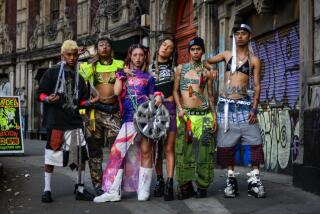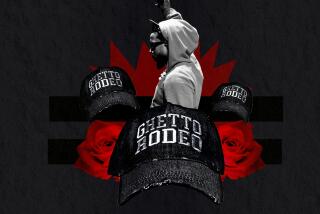What Is Cool? Certainly Not a Campaign for It
- Share via
Microsoft Corp. has launched a new advertising and public relations campaign, and the mission, according to some people who work at the company’s ad agency, Wieden & Kennedy, is a seemingly impossible one: to make Microsoft cool.
“Cool” is the holy grail of the cyber-elite. It’s the only word that conveys success, that draws crowds in virtual space and that indicates a company “gets it,” in the cultural vernacular of the times. Cool is completely binary--a company or a Web site is either cool or it’s dead, cold. In cyberspace, “cool” and “hot” are the same thing.
What is cool? Where does it come from?
It comes from the streets. And more often than not, it comes from the streets of the working poor, especially from the vibrant culture of poor African American and Latino kids. It comes from the opposite pole of our society than the one Microsoft Chairman Bill Gates and his peers inhabit. Increasingly, immense multinational corporations are dependent, for their marketing, on the culture of young people who are the losers in the Information Age.
At the recent Conference on Technology, Jobs and Community held at Cal State L.A., I spent some time talking with some young hip-hop artists, black, white and Latino. Carlos “MARE 139” Rodriguez, a former graffiti artist who grew up in the South Bronx, put it rather succinctly: “The ‘soul’ of this country has always been rooted in poverty.”
This is an old phenomenon. European bourgeois discovered the vitality of urban bohemian culture in the late 19th century, resulting in Puccini’s great opera, “La Boheme.” Harlem’s renaissance in the 1920s was due to wealthy white patrons spending their time and money in black nightclubs. All the forms of that global cultural juggernaut, rock ‘n’ roll, were born in black juke houses in the South or in the ghettos of factory cities in the North.
The predominant cultural expression of the inner city for the last 15 years, hip-hop, has been a brilliant marriage of street slang and technology. Hip-hop got its start in the 1970s when street DJs started manipulating records on turntables to produce rhythms and surprising collages of sounds and words.
Hip-hop musicians have absorbed computers and turned them into bold music machines with sampling, synthesized bass and dense layers of sound and expression. Hip-hop swept the suburban world of white youth as much as it did the mean streets of the ghetto.
Just as corporations swallowed up the music of the ‘60s to sell products to baby boomers, companies have sanitized hip-hop, punk and surfer culture to appeal to the young computer generation. Coca-Cola, perhaps the ultimate brand-name standard, has a home page (https://www.cocacola.com) that features text of surfer “valley talk” in a jagged punk font. One page describes “a guy with a full-body tattoo covered with links”--cyberpunk meets the soft drink business.
Brett Webb runs a Web site called Art Crimes (https://www.graffiti.org), an international database of graffiti art. Webb says he got an offer from Levi Strauss to buy the entire site.
It’s long been an axiom of cool that whenever something cool shows up in commercial use it’s no longer cool.
What is obvious is that the great factories of style and coolness that are constantly churning out ideas in places like East L.A., Watts, Harlem, the South Bronx and elsewhere are always “pushing the envelope” of what mainstream white society will accept. When someone like Dennis Rodman starts showing up in TV commercials and People magazine, it’s time to move on to something new.
But the deepest irony is that the global information economy is pushing the working poor of all races to the wall. In previous eras, it was possible to have a vital working-class culture that survived on factory and service wages. That’s no longer true. Despite the recent boost in the minimum wage, most of the working poor, tens of millions of people, are barely making ends meet.
The fact that billionaires and millionaires are stealing or faking the culture and imagery of the ghetto is not lost on the people who live there. What was once a mostly happy and carefree hip-hop culture has already turned into something angry and dangerous--gangsta rap, for example--and now that’s devolving into something even angrier and more confrontational.
There are edgy fault lines between the artists of the ghetto and high-tech imitators of cool that could eventually register on the Richter scale. Advertising firms may want to make their clients cool, but they’re playing with fire.
More to Read
The biggest entertainment stories
Get our big stories about Hollywood, film, television, music, arts, culture and more right in your inbox as soon as they publish.
You may occasionally receive promotional content from the Los Angeles Times.










